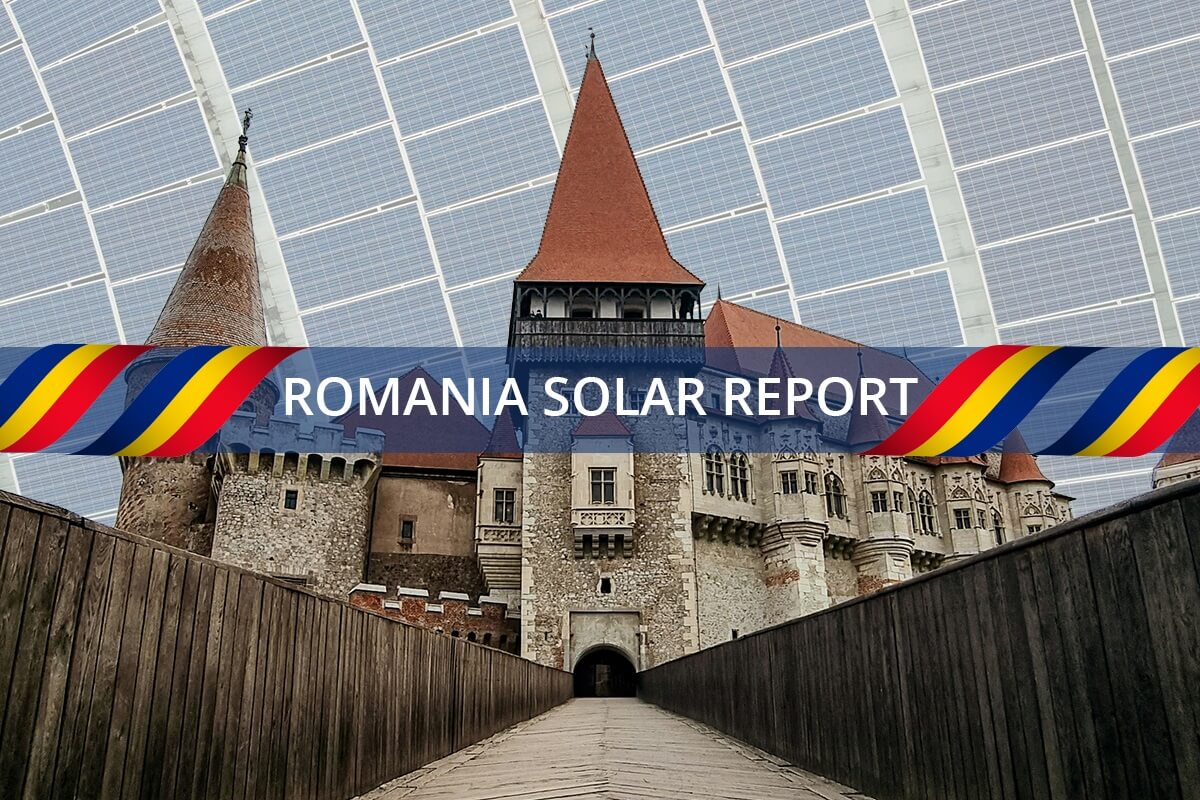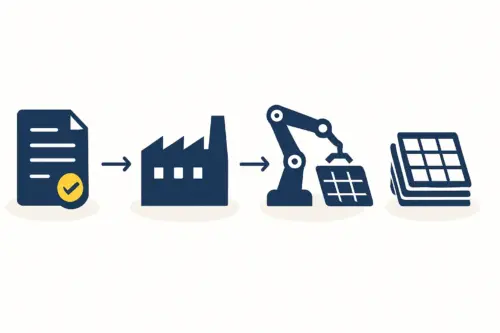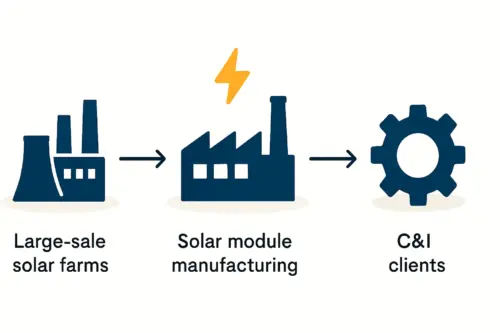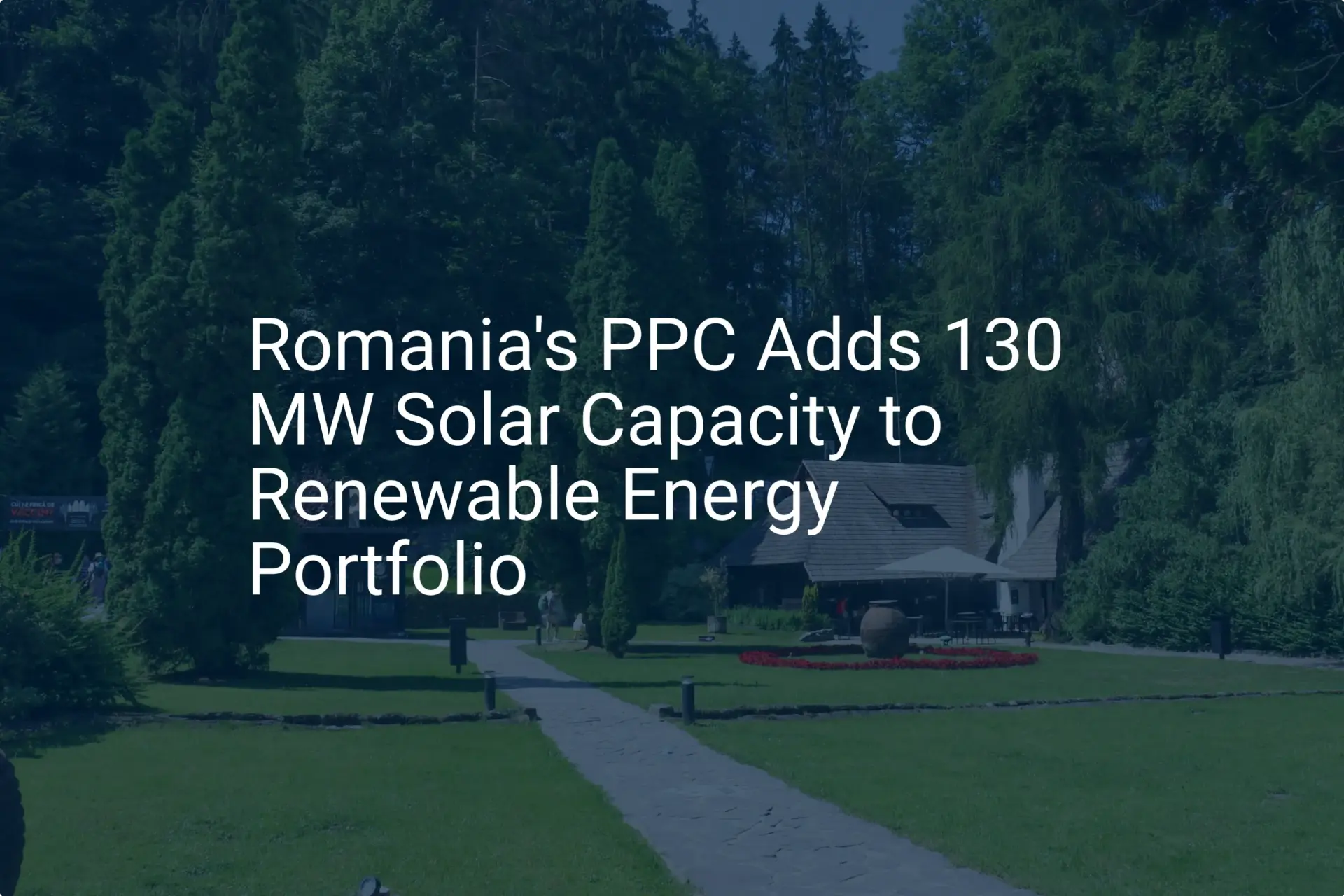When planning a new solar module factory, entrepreneurs rightly focus on production technology, machine selection, and factory layout. But one of the most critical factors for long-term profitability is often an afterthought: logistics.
Your factory’s location relative to a major seaport can shape its cost structure, supply chain resilience, and competitive standing. While ports like Rotterdam and Hamburg dominate headlines, a powerful strategic alternative lies on the Black Sea: the Port of Constanța, Romania.
Here, we’ll explore the business case for leveraging the Port of Constanța as a logistical hub—for importing raw materials from Asia and exporting finished solar modules to European and regional markets. Understanding its unique advantages can give new manufacturing ventures a significant competitive edge.
Why Your Port Strategy is a Core Business Decision
A solar module assembly line is, at its core, a global logistics operation. The vast majority of critical raw materials—photovoltaic cells, specialized glass, EVA encapsulant, and backsheets—are sourced from manufacturers in Asia, while finished modules are destined primarily for markets within Europe.
This creates two distinct logistical challenges:
- Inbound Supply Chain: Efficiently and cost-effectively importing dozens of containers of materials each month.
- Outbound Distribution: Reliably shipping finished products to customers across a diverse continent.
Any friction in this chain, such as port congestion, high inland transport costs, or customs delays, directly erodes profit margins. A well-chosen port is not just a point of entry; it is an integrated part of the manufacturing process. For businesses targeting Central and Eastern Europe, the container’s journey after it’s unloaded is just as critical as the sea voyage itself.
An Overview of the Port of Constanța
The Port of Constanța is the largest and deepest port on the Black Sea. Its strategic importance has grown dramatically, making it a primary gateway to Europe for goods arriving via the Suez Canal.
Key features relevant to solar manufacturing include:
-
Geographic Position: The port offers the most advantageous entry point for cargo moving from Asia to Central and Southeastern Europe, with transit times that can be days shorter than the sea route to Northern European ports.
-
Deep-Water Terminals: Its terminals can accommodate large, post-Panamax container vessels, ensuring service from all major global shipping lines.
Ready to make big Profits?
The solar Industry is Booming
WE HELP NEWCOMERS to the solar industry start their own solar module production line. Customers can make BIG PROFITS by selling modules and finding investors, without wasting money and time on things they don't need!
-
Intermodal Connectivity: The port connects directly to Europe’s inland waterway system via the Danube-Black Sea Canal, enabling cost-effective barge transport deep into the continent to countries like Serbia, Hungary, Austria, and even Southern Germany. It also boasts robust rail and road networks.
The port handles over 75 million tonnes of cargo annually, with container traffic showing consistent growth. This track record makes it a reliable, high-capacity hub capable of supporting industrial-scale operations. For a new enterprise, that scale ensures access to competitive shipping rates and regular service schedules.

The Business Case: Importing Raw Materials
A solar module factory’s financial viability hinges on the landed cost of its raw materials. For the inbound supply chain for solar panel manufacturing, the Port of Constanța offers several distinct advantages.
Sourcing from Asia
With primary suppliers in China and Southeast Asia, the sea route through the Suez Canal is the global standard. Constanța is one of the first major European ports of call on this route, potentially reducing shipping times by several days compared to continuing to Hamburg or Antwerp. Shorter transit times mean less capital tied up in inventory on the water.
Cost and Efficiency Analysis
For a factory in Romania, Hungary, or Poland, importing through Constanța can generate significant savings on inland transportation, as trucking a container from Hamburg to Budapest can be substantially more expensive than moving it from the Black Sea coast.
Furthermore, the port operates the Constanța Sud – Agigea Free Zone—a powerful financial tool for manufacturers. In this secured area, imported goods can be stored and processed without immediately being subject to duties and taxes. Raw materials can be brought into the free zone, and duties are only paid when the finished modules made from them officially enter the European Union market. This model significantly improves cash flow, a critical concern for any new business.
The Export Advantage: Reaching European and Regional Markets
The port’s location also provides a distinct advantage for delivering finished modules to several high-growth solar markets.
Access to Central and Eastern Europe (CEE)
The Danube-Black Sea Canal is a key strategic asset. Instead of relying solely on expensive, carbon-intensive road freight, finished modules can be loaded onto river barges for delivery to key markets along the Danube. While slower, this mode of transport is often far more economical for bulk shipments.
Serving Southern Europe and the MENA Region
Constanța is also ideally positioned as an export hub for markets in the Balkans, Turkey, and the wider Middle East and North Africa (MENA) region. This provides manufacturers with diversified market access, reducing reliance on the highly competitive Western European market.
A typical 50 MW production line requires managing 20-30 TEU containers of raw materials monthly. The efficiency gains from a strategically located port, a key part of the investment for a solar panel factory, can translate into savings of thousands of Euros per month, directly impacting the bottom line.
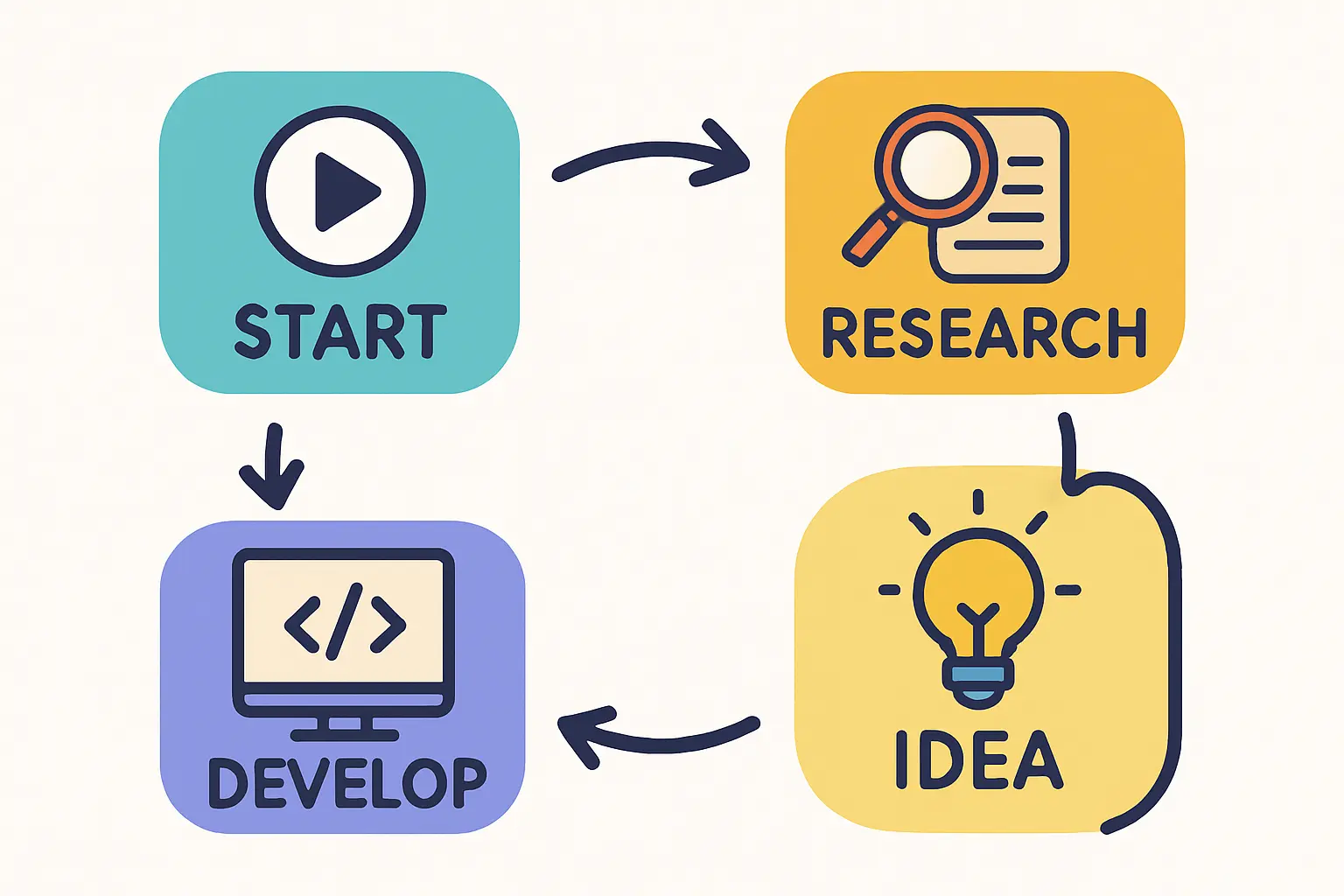
Practical Considerations and Potential Challenges
Of course, a realistic assessment must also account for potential challenges.
-
Inland Infrastructure: Although improving, road and rail infrastructure in parts of Southeastern Europe may not be as developed as in Germany or the Netherlands. Thorough due diligence on inland logistics routes is essential.
-
Administrative Procedures: Like any major port, navigating customs and administrative processes requires expertise. J.v.G. Technology’s experience with turnkey projects in the region confirms that partnering with a reliable, local freight forwarder is critical for smooth operations.
-
Geopolitical Factors: The Black Sea is a region of significant geopolitical interest, so businesses must stay informed about regional developments that could impact shipping routes or security.
A successful factory requires an integrated approach, where internal processes connect seamlessly with the external logistics network. Any plan for a turnkey solar module production line must include a detailed logistics and supply chain strategy from the outset.
Frequently Asked Questions (FAQ)
What is a TEU?
TEU stands for ‘Twenty-foot Equivalent Unit.’ It is a standard unit of measurement for shipping containers. A standard 40-foot container is equal to two TEUs. This metric is used to measure a port’s cargo handling capacity.
Is the Port of Constanța as congested as other major European ports?
Historically, Constanța has been less congested than major North Sea ports like Rotterdam or Hamburg. While its traffic has increased significantly in recent years, its efficient operations and ongoing expansion projects have helped manage the flow of cargo effectively.
How does the Danube-Black Sea Canal facilitate cargo transport?
The canal provides a direct, navigable waterway from the Black Sea to the Danube River, Europe’s second-longest river. This allows large river barges to transport goods from the port to inland destinations in countries like Serbia, Croatia, Hungary, Slovakia, and Austria, bypassing road and rail networks.
Do I need a Romanian company to use the port’s facilities?
No. An international business can work with freight forwarders and logistics companies who are licensed to operate within the port and manage all customs clearance, transportation, and administrative tasks on your behalf.

Conclusion: Integrating Logistics into Your Factory Plan
The success of a solar module manufacturing plant depends on more than just the quality of its machines. It is a business of margins, where operational efficiency and supply chain management are decisive.
The Port of Constanța offers a compelling logistical advantage for entrepreneurs looking to build a manufacturing footprint to serve European markets. Its strategic location, intermodal connectivity, and free zone benefits create an opportunity to build a more resilient, cost-effective, and competitive operation.
When developing your business plan, analyze these logistical factors with the same rigor you apply to production technology. A comprehensive feasibility study should map the entire journey of your materials and finished products, as this diligence will ultimately define the long-term health of your enterprise.

